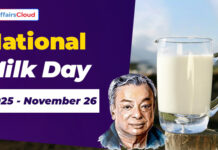
On November 30, 2021, the National Statistical Office (NSO), Ministry of Statistics and Programme Implementation (MoSPI) launched the 10th Quarterly Bulletin (January- March 2021) of Periodic Labour Force Survey (PLFS).
Basis of Assessment:
In the urban areas, Pan-India, a total number of 5,601 FSUs- First Stage Units (UFS- Urban Frame Survey blocks) have been surveyed during the January – March 2021. The number of urban households surveyed was 44,000, and the number of persons surveyed was 1,72,484 in urban areas.
Before heading towards the highlights, have a look on following 4 indicators of PLFS:
i.Labour Force Participation Rate (LFPR): It is the percentage of persons in the labour force (i.e. working or seeking or available for work) in the population.
ii.Worker Population Ratio (WPR): It is the percentage of employed persons in the population.
iii.Unemployment Rate (UR): It is the percentage of persons unemployed among the persons in the labour force.
iv.Current Weekly Status (CWS): The activity status determined on the basis of the last 7 days preceding the date of survey is known as the CWS of the person.
- As per the CWS approach survey, a person will be considered unemployed if he/she did not work even for 1 hour during the 7 days but sought or was available for work at least for 1 hour during the same period.
Key Highlights from Survey:
i.UR (in %) in CWS in urban areas for persons of age 15 years and above in urban areas:
It rose to 9.3% in January-March 2021 from 9.1% in the same months of 2020. It was 10.3% in October-December 2020.
- Among females, it rose to 11.8 % in January-March 2021 from 10.6% in the corresponding period. It was 13.1% in October-December 2020.
- Among males, it remained constant at 8.6% in both periods. It was 9.5% in October-December 2020.
ii.LFPR (in %) in CWS in urban areas for those 15 years of age and above:
It was 47.5% in January-March quarter of 2021, down from 48.1% in the same period a year ago. It was 47.3% in October-December 2020.
- Female participation in the labour force was at 21.2% in the January-March 2021, lower than 21.9% in the same quarter previous year. It was 20.6% in October-December 2020.
- Male participation in the labour force was at 73.5% January-March 2021 as compared to 73.7% in the corresponding period. It was 73.6% in October-December 2020.
iii.WPR (in %) in CWS in urban areas for persons of age 15 years and above
It stood at 43.1% in January-March 2021, down from 43.7% a year ago.
- For females, it was 18.7% in January-March 2021 as compared to 19.6% in January-March 2020. It was 17.9% in October-December 2020.
- For males, it was 67.2% in January-March 2021 as compared to 67.3% in January-March 2020. It was 66.7% in October-December 2020.
About Periodic Labour Force Survey (PLFS):
Launched in 2017 by NSO, is objective is to estimate the key employment and unemployment indicators in the short time interval of three months for the urban areas only CWS.
- It also estimates employment and unemployment indicators in both ‘Usual Status’ (ps+ss) and CWS in both rural and urban areas annually.
Click Here for PLFS’ Quarterly Bulletin of January – March 2021
Point to be noted:
According to the monthly unemployment data released by the Centre for Monitoring Indian Economy (CMIE), unemployment in India stood at 7.13% as on November 29, 2021.
Recent Related News:
In August 2021, NSO released the 8th PLFS – Quarterly Bulletin for the Q2FY21 (July 2020 – September 2020). As per the PLFS, the Jobless/Unemployment rate (UR) in urban areas in Current Weekly Status (CWS) increased to 13.3% in Q2 FY21 when compared to 8.4% in Q2FY20 (July 2019 – September, 2019).
About National Statistical Office (NSO):
i.It is the Statistics Wing of the Ministry of Statistics and Programme Implementation, and has the Central Statistical Office (CSO), the Computer centre, and the National Sample Survey Office (NSSO).
ii.It acts as a nodal agency for development of the statistical system in India. It creates and maintains the norms and standards in the field of statistics.




